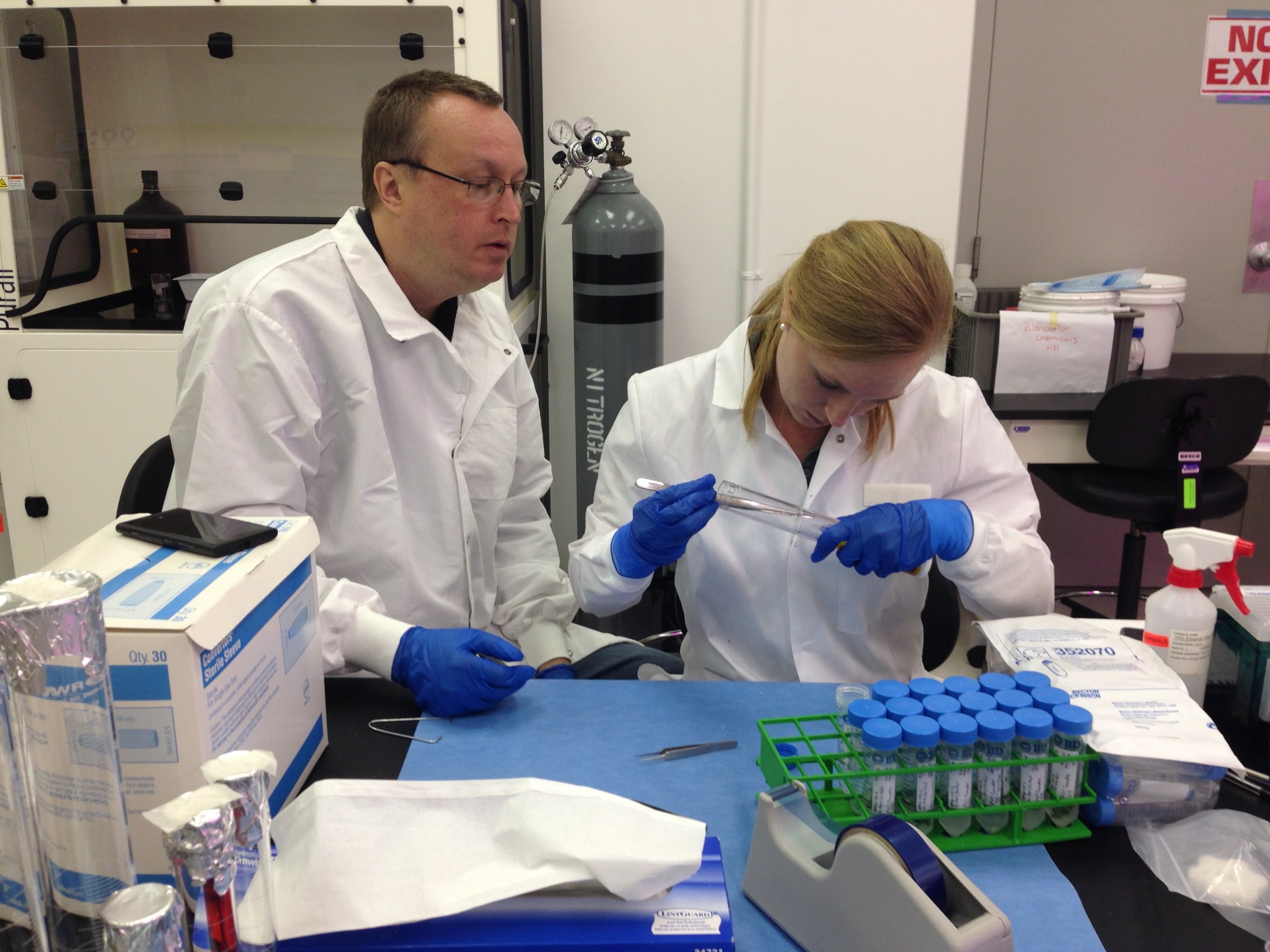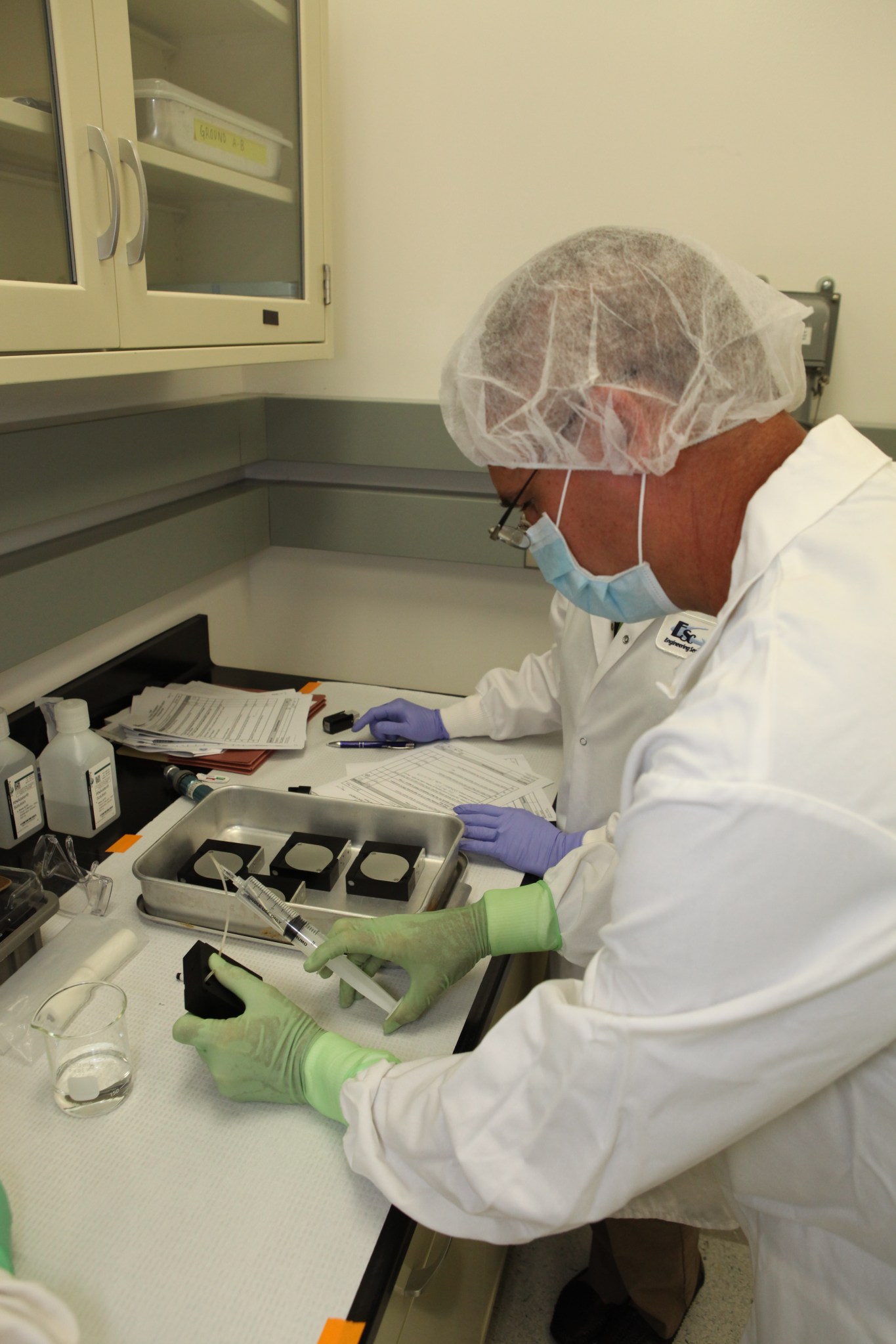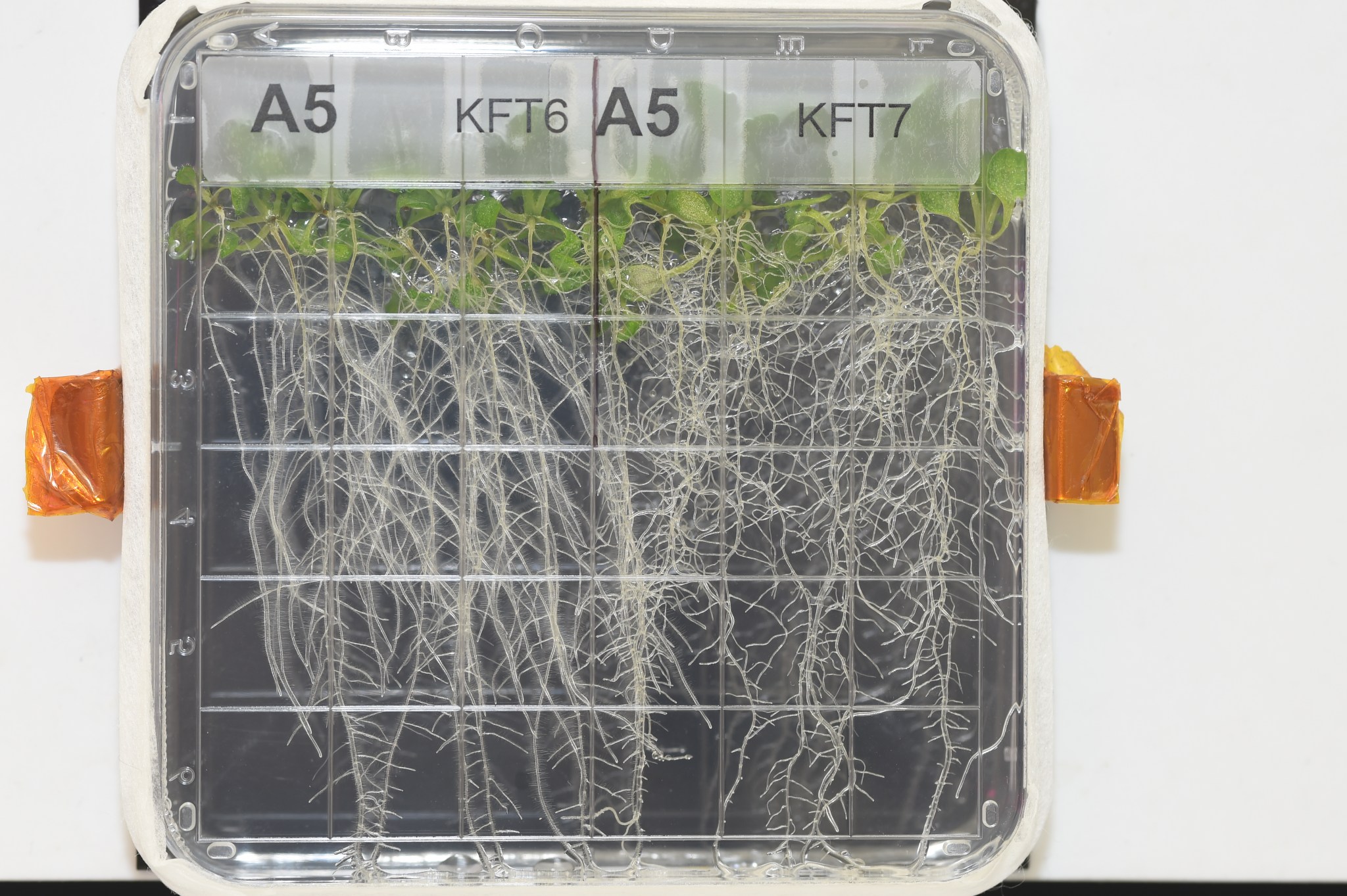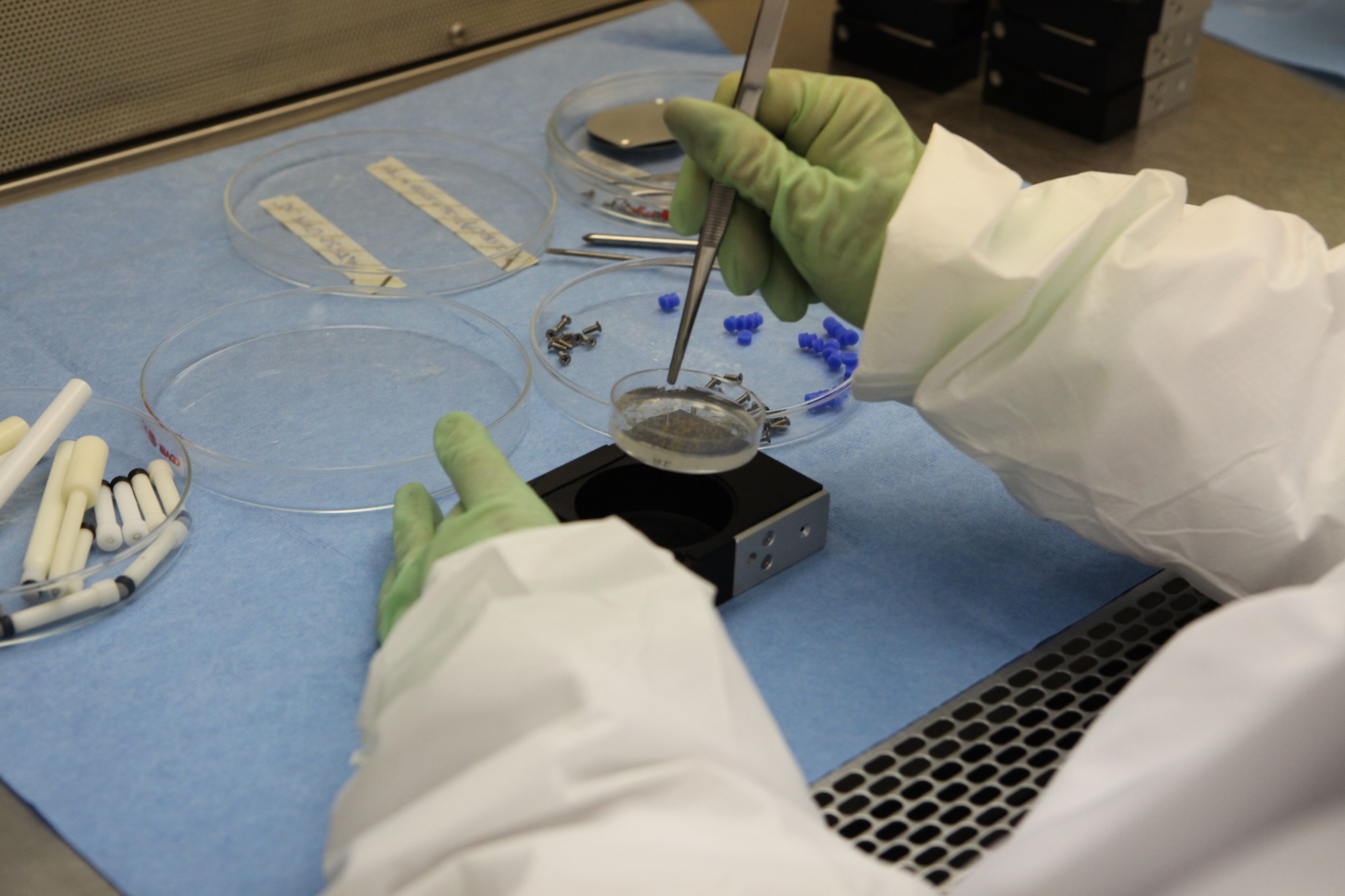Two of the plant experiments riding to the International Space Station (ISS) on SpaceX’s fifth commercial resupply mission in December began their voyage inside the Space Station Processing Facility (SSPF) at NASA’s Kennedy Space Center in Florida. The experiments will help advance knowledge in the physical and biological sciences that in turn could benefit humans on Earth as well as astronauts on long-duration space missions.
The Advanced Plant EXperiments on Orbit (APEX) 3 and Biological Research in Canisters (BRIC) 20 were prepared in laboratories inside the SSPF. They will be loaded in SpaceX’s Dragon capsule just a few days before liftoff. Once they have been delivered, crew members aboard the space station will follow a set of procedures to activate and monitor the experiments and prepare them for return to Earth.
Both experiment series are sponsored by the Space Biology Program to help investigate how cells, plants and animals respond to changes in gravity. The program is managed by the Space Life and Physical Sciences Research and Applications Division in NASA’s Human Exploration and Operations Mission Directorate.
“We are sending plants into space to better understand how they respond and adapt to spaceflight, which will give us insights into building better crops on Earth as well as what we can anticipate as we step out into the solar system on our way to Mars,” said Trent Smith, NASA APEX project manager
Included in the Kennedy team’s responsibilities were preparing the laboratories, equipment and supplies for the investigator teams, the experiment monitoring area for mission support and the ISS Environmental Simulator (ISSES) chamber for ground control testing in the SSPF. The team also performed payload and science verification tests and sent samples to the principal investigators to confirm viability.
APEX-03 actually is two experiments that will be activated in the Veggie plant growth facility already on the space station. The first, APEX-03-1, will study microgravity’s impact on root development and cell walls of plant seedlings. For this experiment, Arabidopsis thaliana seeds, also called cress-ear, were placed in petri plates filled with a gel-like growth medium called agar.
The second experiment, APEX-03-2, Arabidopsis thaliana seedlings were placed in agar-filled petri plates to study the effects of microgravity on the DNA of plant roots in a spaceflight environment. Aboard the space station, the seedlings will be placed in the Veggie facility for up to 11 days. The light microscopy module, a modified commercial imaging microscope facility on the station, will be used to more closely inspect and map root structure and the location of green fluorescent genes in the plants.
For both experiments, the seedlings will be photographed, harvested and preserved with a chemical fixative in Kennedy Fixation Tubes and returned to Earth on the same Dragon capsule for post-flight evaluation.
Allison Mjoen, a payload integration engineer, led science development activities and was the primary interface with the principal investigator teams for the APEX-03 experiments.
“It is a tedious yet rewarding process to prepare a payload to fly to and operate on the space station,” Mjoen said. “The research the investigator teams are conducting have implications for improving agriculture and biomass production here on Earth.”
Preparations for APEX-03 were not without challenges. According to Shawn Stephens, APEX project engineer, Veggie had to be verified that it could function as a science platform that could support both experiments because the Advanced Biological Research System facility currently on the space station was not available to support them. Also, Kennedy worked with a team at NASA’s Glenn Research Center in Cleveland to acquire a light microscopy module unit that could be used during the ground control experiment in the ISSES chamber.
Before the APEX experiments are prepared for stowage in the Dragon capsule, they will be wrapped in protective foil and placed in flame-retardant Nomex kit bags. The bags will keep the plant samples as fresh as possible for the ride to the space station.
“I consider it an honor to work with the talented science investigation teams to prepare for this exciting mission,” Stephens said. “I don’t think it would have been as fun without all of the challenges we overcame.”
While Expedition crew members work with the APEX experiments on the space station, a “pseudonaut” at Kennedy will be following the same procedures on identical plant samples in an ISSES chamber in the SSPF that mimics as close as possible the conditions on the space station, except for gravity.
The BRIC-20 experiment consists of four canisters with 22 petri dishes containing approximately 800 Arabidopsis thaliana seeds atop a growth medium. On Dec. 14, the team will integrate the petri dishes into the petri dish fixation units, and then into the BRIC canisters.
“Our BRIC team is a high-energy, experienced team capable of meeting any challenge that comes our way,” said Susan Manning-Roach, BRIC project engineer and task leader for preparing and assembling the hardware as well as the integration of the science specimens into a sterile enclosed environment.
BRIC-20 will study the underlying molecular mechanisms of microgravity and how it impacts plant growth and development. This research has the potential to aid in better design of plants for bio-regenerative life support during spaceflight.
The seeds will be kept cold until they are unpacked after delivery to the space station. On the space station, a three-day growth period will allow the seeds to germinate. Then the seedlings will be preserved and placed in a cold storage unit that maintains experiment samples at ultra-cold temperatures throughout a mission until its return to Earth and the principal investigators.
David Flowers, the NASA BRIC project manager, said in spite of several challenges while preparing the hardware and samples for the mission, the team was able to complete its preparations in just seven months. In comparison, BRIC-17 required 22 months to prepare for SpaceX’s third commercial resupply mission to the station earlier this year.
Challenges included damage to the science verification test specimens during shipping, actuator tool anomalies, a failed payload verification test germination and the performance of an unplanned test to identify the contributing factors to the failure.
“We’ve learned some very good lessons and applied these lessons quite effectively,” Flowers said. “We’ve put Kennedy’s greatest assets on display–delivering hardware on schedule, getting the job done on budget, and having the hardware function as intended.”






























